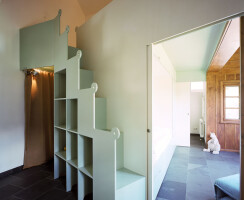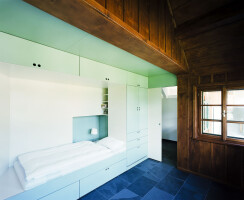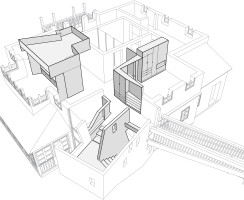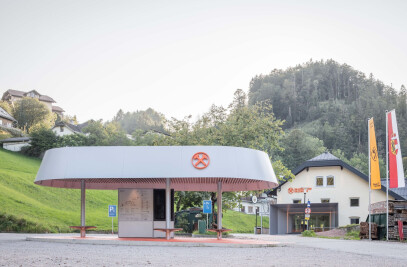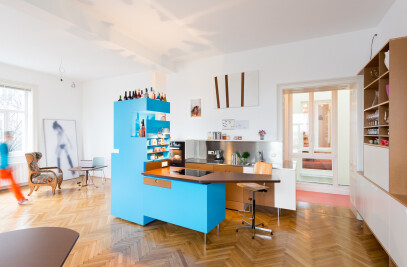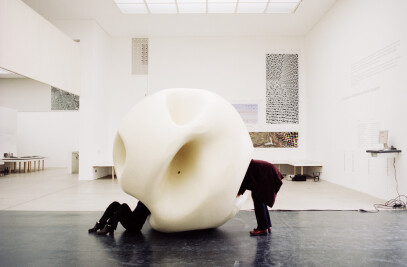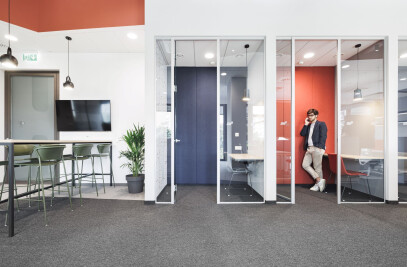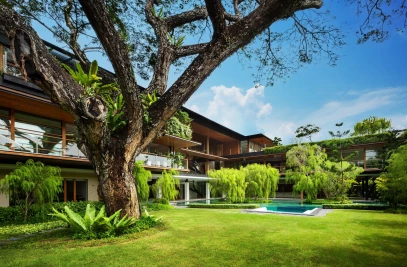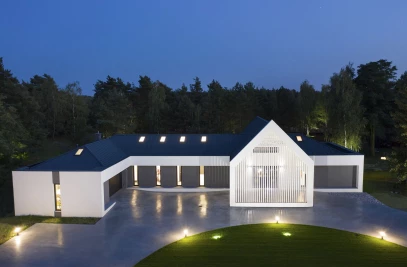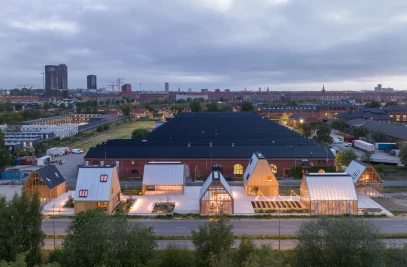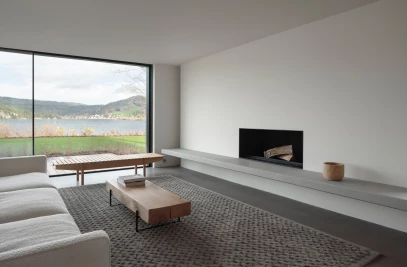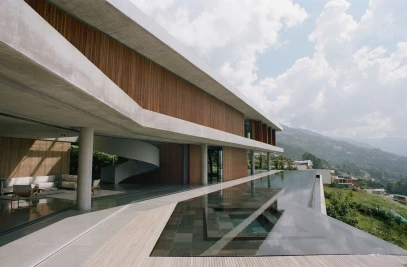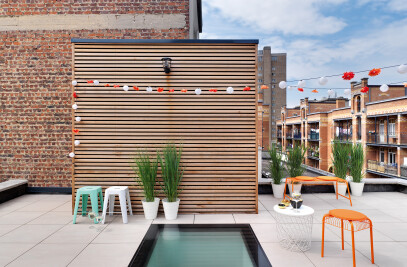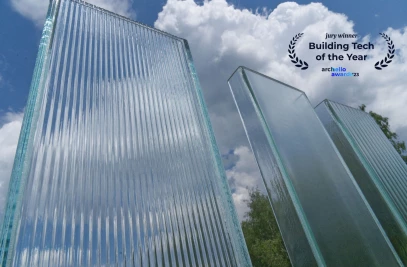A house and two of the wooden huts typical for the area made up the original group of buildings that was the basis for our project; one hut had been converted to a guest house by the previous owners, the other was used as a shed. The brief asked for an adaption of the existing house (originally planned for two people) for use by a family with three children, for an additional guest room and for the building of a new carport. Our strategy was to work on the existing ensemble, defined by the traditional building typology of the area, by selective interpretations and additions. We refer to these elements scattered among the old buildings as 'house satellites'. The façade cladding in the untreated larch boards typical of the area as well as the color change it will undergo relative to its orientation – to a brownish black on the south and a silvery grey on the north – are part of the overall material and color concept.
the ‘WaldDach’ (forest roof )_ One more 'hut' is added to the group of buildings. In a first step the 40m² allowed by the building code were placed on site taking into account topographical lines, the surrounding trees and existing buildings and the need for a driveway to reach the 'hut'. The selected site turned out to have a spectacular view of the lake, too beautiful for the exclusive use as a garage. This led to the idea of designing the garage as a space that could double as a sheltered playing or sitting area for the frequent rainy days of summer. Two side walls on the forest side and a steel leg on the south side with its view of the lake support a triangular roof volume made from prefabricated, laminated wood panels. The roof volume can be accessed from below by a folding stairway and serves as storage space and occasional bedroom. The wooden roof and back wall are protected by transparent sheets of grey corrugated acrylic.
the ‘VogelHaus’ (bird house) _ The original covered entrance was replaced by a new staircase – called the ‘VogelHaus’ (bird house). The space of the old staircase is now occupied by a library/guest room on the ground floor and by a bedroom on the first floor. On the inside the new staircase entangles the spaces of the old building, while on the outside it was designed to appear as a separate volume, leaving the appearance of the old house intact. A second entrance connected to a bridge organizes the house into two autonomous units and facilitates access in snowy winters.
the ‘RaumMöbel’ (space-furniture) _ The old bathroom on the first floor was subdivided and the surrounding open space organized into three additional sleeping areas with very different atmospheres by two pieces of space-furniture. The individual areas can be separated completely by mobile elements. This way, in addition to the old bedroom and bathroom, three kid's bedrooms and a bathroom found space on the first floor. The pieces of space-furniture are simply placed on the floor and could/can be removed once the kids are grown and move out.
the ‘TerassenLandschaft’ (terrace landscape) _ We see the south terrace as part of the sloping terrain. To us it was important not to disrupt the flow of the landscape and by choice of materials and colors blend with the environment. A bronze-colored steel structure serves as support for the floor boards of Siberian larch and for the polymer-concrete flower containers that form the floating "flowerhorizon".
Project Team: Marie-Therese Harnoncourt-Fuchs, Ernst J. Fuchs, Raphael Stein, Paul Vabitsch, Petra De Colle, Kristina Rypáková (model) Mirta Bilos (publication drawings)



